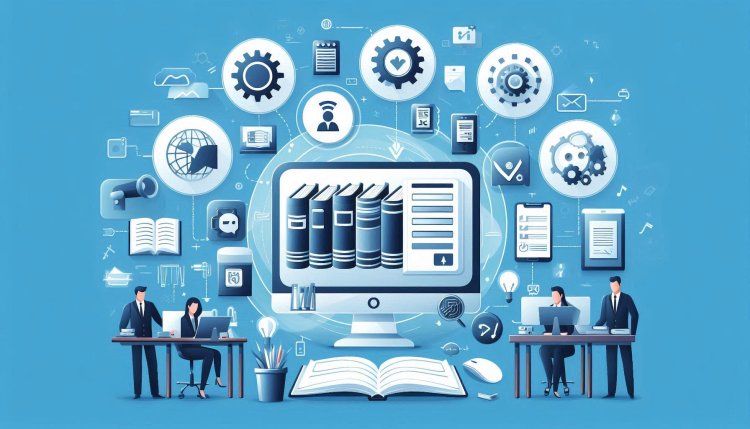Features of online library ERP software
"Discover the powerful features of online library ERP software for efficient management of library resources and services. Streamline operations with ease."

Features of Online Library ERP Software
Online Library ERP (Enterprise Resource Planning) software is a comprehensive solution designed to streamline and automate the management of libraries. It offers a wide range of features to help librarians, administrators, and patrons efficiently manage library operations. Below are some key features of online library ERP software:
1. Catalog Management
Library ERP software provides robust catalog management features that allow librarians to organize and categorize library resources effectively. It enables easy creation, editing, and updating of bibliographic records, along with support for various formats such as books, journals, media, and digital resources.
2. User Management
With user management capabilities, librarians can efficiently manage patron information, including registration, profiles, and borrowing privileges. Library ERP software allows for easy user registration, tracking of user activities, and management of fines and penalties.
3. Circulation Management
Circulation management features enable librarians to track the borrowing and return of library materials efficiently. It includes functionalities such as check-in/check-out, hold requests, renewals, and reservations, ensuring smooth circulation processes.
4. Search and Discovery
Online Library ERP software offers advanced search and discovery capabilities to help patrons easily find the resources they need. It supports keyword search, advanced search filters, browsing options, and personalized recommendations based on user preferences.
5. Digital Resource Management
Library ERP software enables the management of digital resources, including e-books, online journals, databases, and multimedia content. It provides secure access controls, digital rights management, and integration with digital libraries and repositories.
6. Reporting and Analytics
Reporting and analytics features in Library ERP software allow administrators to generate custom reports, track library usage metrics, analyze trends, and make data-driven decisions. It provides insights into collection usage, patron behavior, and resource preferences.
7. Integration and Interoperability
Library ERP software supports integration with other systems and services, such as library management systems, learning management systems, authentication systems, and discovery platforms. It ensures seamless data exchange and interoperability with external applications.
8. Mobile Accessibility
Many online library ERP software solutions offer mobile accessibility, allowing users to access library resources and services on the go. Mobile apps or responsive web interfaces enable patrons to search, borrow, and interact with the library anytime, anywhere.
9. Multi-Lingual Support
Multi-lingual support is a valuable feature in Library ERP software that caters to diverse user populations. It allows users to interact with the system in their preferred language, enhancing accessibility and usability for international libraries.
10. Resource Sharing and Interlibrary Loan
Library ERP software facilitates resource sharing and interlibrary loan services, enabling libraries to collaborate and exchange materials with other institutions. It streamlines the process of requesting, lending, and returning items between libraries.
11. Automated Notifications
Automated notification features in Library ERP software help in communicating with patrons effectively. It includes email alerts for due dates, hold requests, overdue items, fines, and other important updates, improving user engagement and service efficiency.
12. Accessibility and Compliance
Library ERP software prioritizes accessibility and compliance with industry standards and regulations. It ensures adherence to library data formats, cataloging rules, copyright laws, and accessibility guidelines to provide inclusive services for all users.
13. Customization and Configuration
Library ERP software offers customization and configuration options to tailor the system to the unique needs of each library. Administrators can customize workflows, user interfaces, data fields, and settings to align with specific requirements and preferences.
14. Security and Privacy
Security and privacy features in Library ERP software protect sensitive library data and patron information. It includes role-based access controls, data encryption, audit trails, and compliance with data protection regulations to ensure data security and confidentiality.
15. Scalability and Flexibility
Online Library ERP software
What's Your Reaction?

















